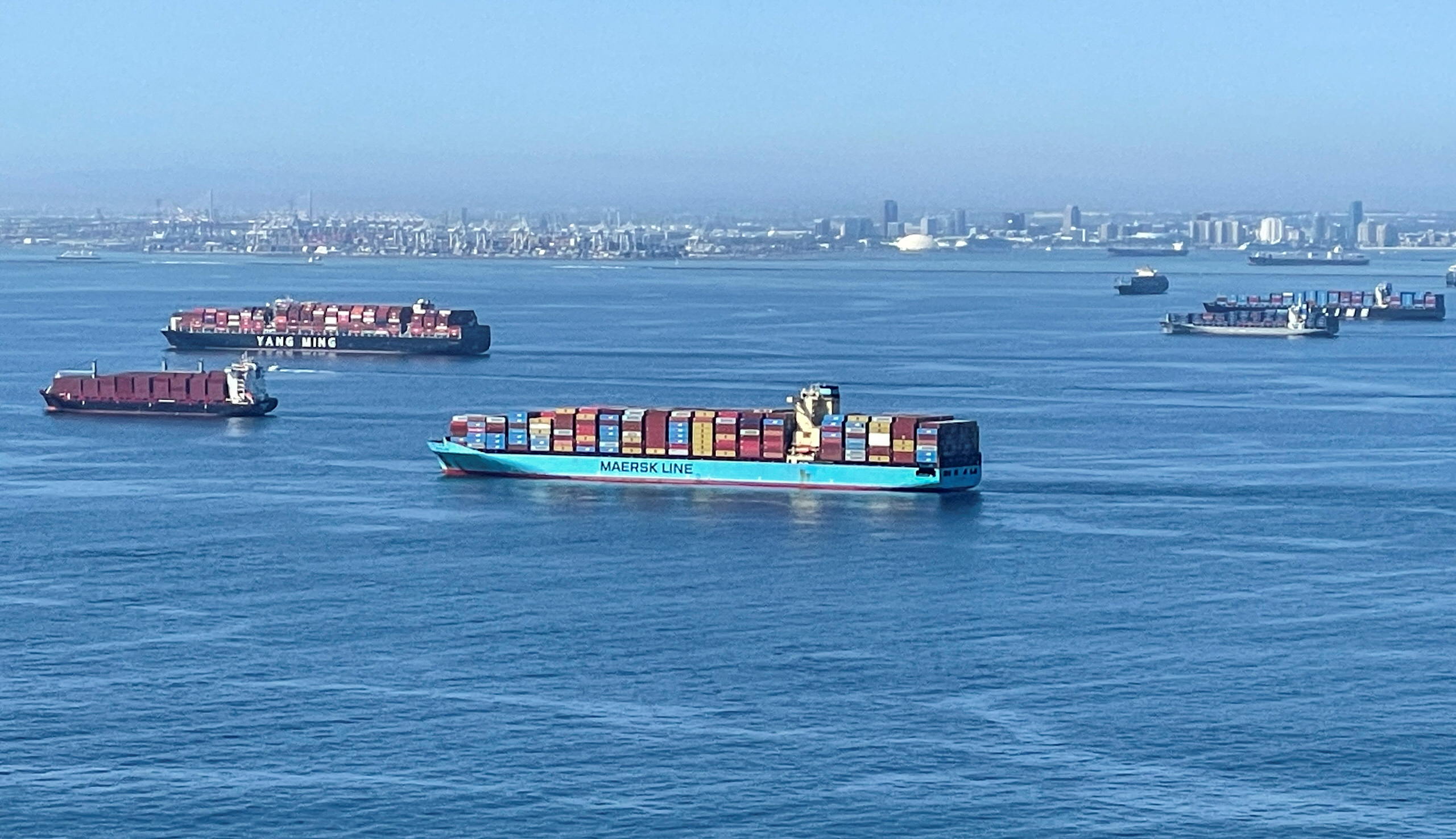Montreal Port Project Backed Sees Cost Rise to $1.7 Billion
(Bloomberg) — The cost of a new Port of Montreal terminal that Canadian Prime Minister Mark Carney says is in the national interest has soared to C$2.3 billion ($1.7 billion),...

By Brendan Murray (Bloomberg) — The number of container ships headed for the busiest U.S. port complex has risen to close to 100 under a new counting method, underscoring the magnitude of the economy-restraining logjam that the Biden administration is trying to help alleviate.
The backup outside the adjacent ports of Los Angeles and Long Beach, California, involves 96 container carriers, up from 86 on Nov. 16, when a new queuing system took effect and dozens of arriving ships stayed outside the official area to be counted, according to the Marine Exchange of Southern California. The revised measure released late Friday includes those eastbound vessels farther out in the Pacific.
Just when it looked like the bottleneck was easing — the previous official tally was 41 ships in the queue as of Thursday — the latest numbers confirm that the most visible symbol of the U.S.’s overwhelmed supply chains is still likely months away from being cleared. The average wait for ships was 20.8 days as of Friday, almost a week longer than a month ago, according to the L.A.’s Wabtec Port Optimizer.

The revised way of counting ships bound for L.A.-Long Beach divides them into a couple categories: 40 vessels that are either anchored in designated spots plus those “loitering” within 40 miles of the ports, and another 56 outside that perimeter, many of which have slowed their speed on the voyage from Asia that typically takes at least two weeks. So the line has gotten longer both in number of ships and distance.
There’s little relief in sight. American importers typically book January orders well in advance to restock inventories before Chinese factories and ports reduce activity during the Lunar New Year holiday, which next year starts in early February.
The White House has focused its attention on working with the logistics industry to move the empty and full containers that have piled up near the port terminals, by encouraging longer hours for truckers and longshoremen and by backing incentives for timely pickup of goods lingering for days or weeks.
That effort to reduce so-called dwell times for containers in Southern California has had mixed results, with the number of boxes waiting zero to eight days dropping to 33,520 as of Dec. 2, from 39,671 a week earlier, according to the L.A. port’s figures. Still, the number waiting nine days or longer rose to 21,278, from 18,170 a week earlier.
© 2021 Bloomberg L.P.

Sign up for gCaptain’s newsletter and never miss an update

Subscribe to gCaptain Daily and stay informed with the latest global maritime and offshore news


Stay informed with the latest maritime and offshore news, delivered daily straight to your inbox
Essential news coupled with the finest maritime content sourced from across the globe.
Sign Up